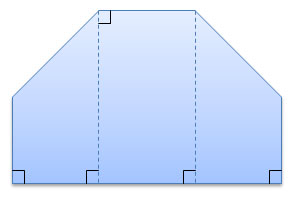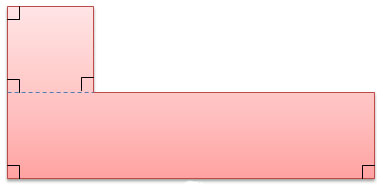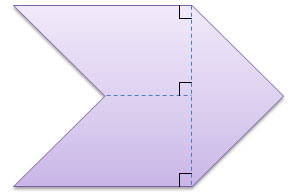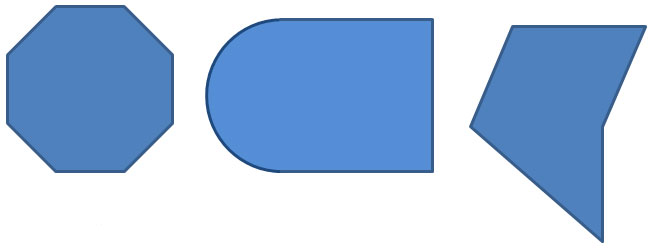
In the last section, you practiced different ways to partition a composite figure into rectangles, triangles, parallelograms, trapezoids, squares, circles, semicircles, or quarter circles. In this section, you will take those smaller parts and identify area formulas necessary to calculate the area of each component region of the composite figure.
A swimming pool company offers several designs of swimming pools, including the ones shown below.

![]() Nedra is in charge of calculating the area of the surface of each pool. The animation below shows how Nedra divided the composite figure representing each swimming pool into regions. These regions should have simple area formulas. Click on the Animate button to see how she did it.
Nedra is in charge of calculating the area of the surface of each pool. The animation below shows how Nedra divided the composite figure representing each swimming pool into regions. These regions should have simple area formulas. Click on the Animate button to see how she did it.
![]() For each of the diagrams, match the formula needed to compute the area for that region. You may use some formulas more than once or not at all.
For each of the diagrams, match the formula needed to compute the area for that region. You may use some formulas more than once or not at all.
The actual dimensions for each pool are shown below. Calculate the area of each pool by calculating the area of each component region, and then determine the sum of the areas.
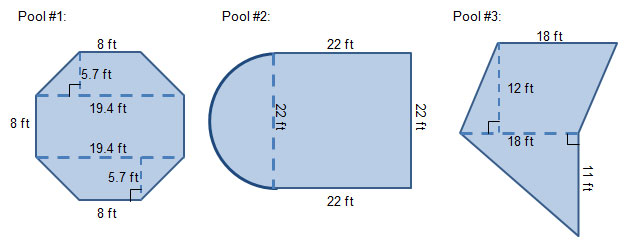



Thinking about area formulas, which type of polygon or circle is it easier to break a composite figure into in order to calculate the area?

Why is it sometimes possible to break a composite figure into different polygons?
For questions 1 – 3, each composite figure is broken into different component regions. Identify the area formula required to calculate the area of each component region.
